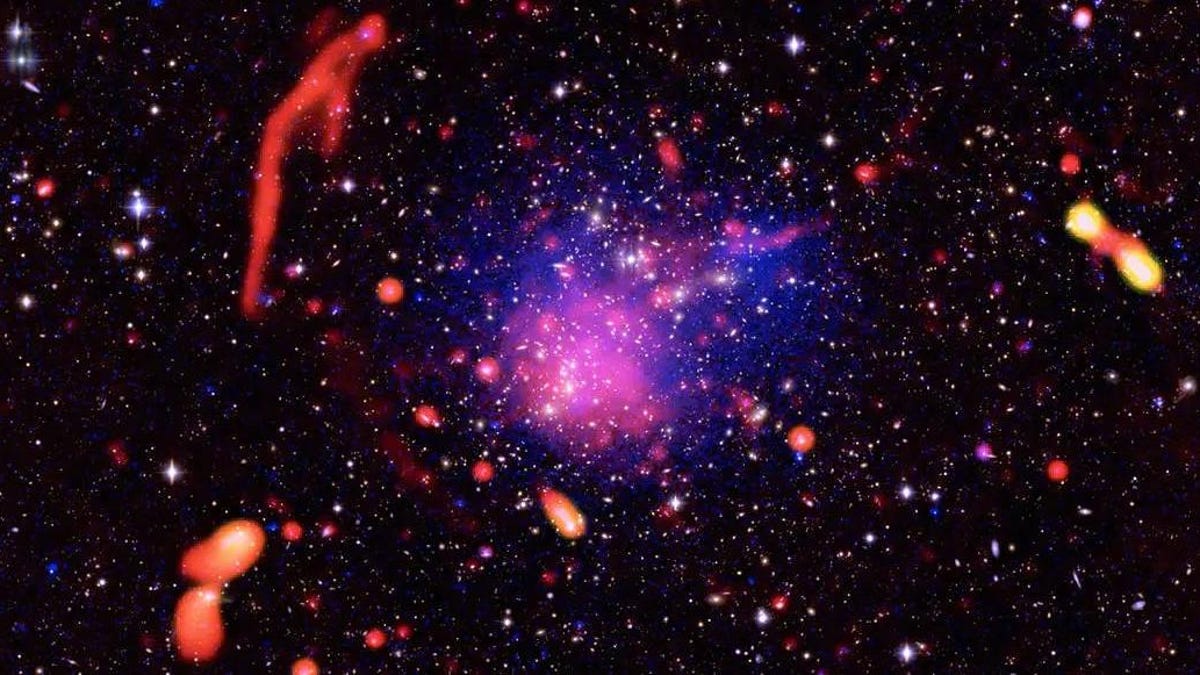A recent deep field image from the Webb Space Telescope, showcasing a region of space known as Pandora’s Cluster, or Abell 2744, features two galaxies. These galaxies are remarkable for their distance from Earth, being the second and fourth most distant galaxies ever observed, according to a team of researchers that recently scrutinized the image.
Webb first observed Abell 2744 in June 2022, including some 60,000 other light sources in a deep field of the cluster. Now, spectroscopic data from the galaxies revealed their superlative distance: about 33 billion light-years away, according to astronomers. Research describing the newfound characteristics of the ancient galaxies was published this week in the Astrophysical Journal Letters.
Ancient galaxies are generally point-like light sources in the eyes of space telescopes, but “one of ours appears elongated, almost like a peanut, and the other looks like a fluffy ball,” said Bingjie Wang, an astronomer at Penn State University and lead author of the recent paper. “It is unclear if the difference in size is due to how the stars formed or what happened to them after they formed, but the diversity in the galaxy properties is really interesting.”
The Hubble Space Telescope imaged Abell 2744 back in 2014 as part of its Frontier Fields project. The cluster is about 3.5 billion light-years away, but it magnifies more distant light sources (including the two galaxies in question) thanks to gravitational lensing.
The galaxies aren’t actually 33 billion years old. Their light was emitted when the universe was just 330 million years old (it is now nearly 14 billion years old), and it travelled about 13.4 billion light-years to reach Webb’s detectors. The universe’s expansion has stretched the distance between us and the galaxies, meaning they (or what remains of them) is now 33 billion light-years away.
“The light from these galaxies is ancient, about three times older than the Earth,” said Joel Leja, an astrophysicist at Penn State and a member of the UNCOVER team. “These early galaxies are like beacons, with light bursting through the very thin hydrogen gas that made up the early universe. It is only by their light that we can begin to understand the exotic physics that governed the galaxy near the cosmic dawn.”
The researchers believe that more distant galaxies should be visible to Webb’s piercing gaze, if they exist. It’s merely a question of seeing their extraordinarily faint light amidst the bedazzlement of stars in the cosmos.
More: Journey Into the Past: Webb’s Trippy 3D Animation Guides You to an Ancient Galaxy

Dr. Thomas Hughes is a UK-based scientist and science communicator who makes complex topics accessible to readers. His articles explore breakthroughs in various scientific disciplines, from space exploration to cutting-edge research.








